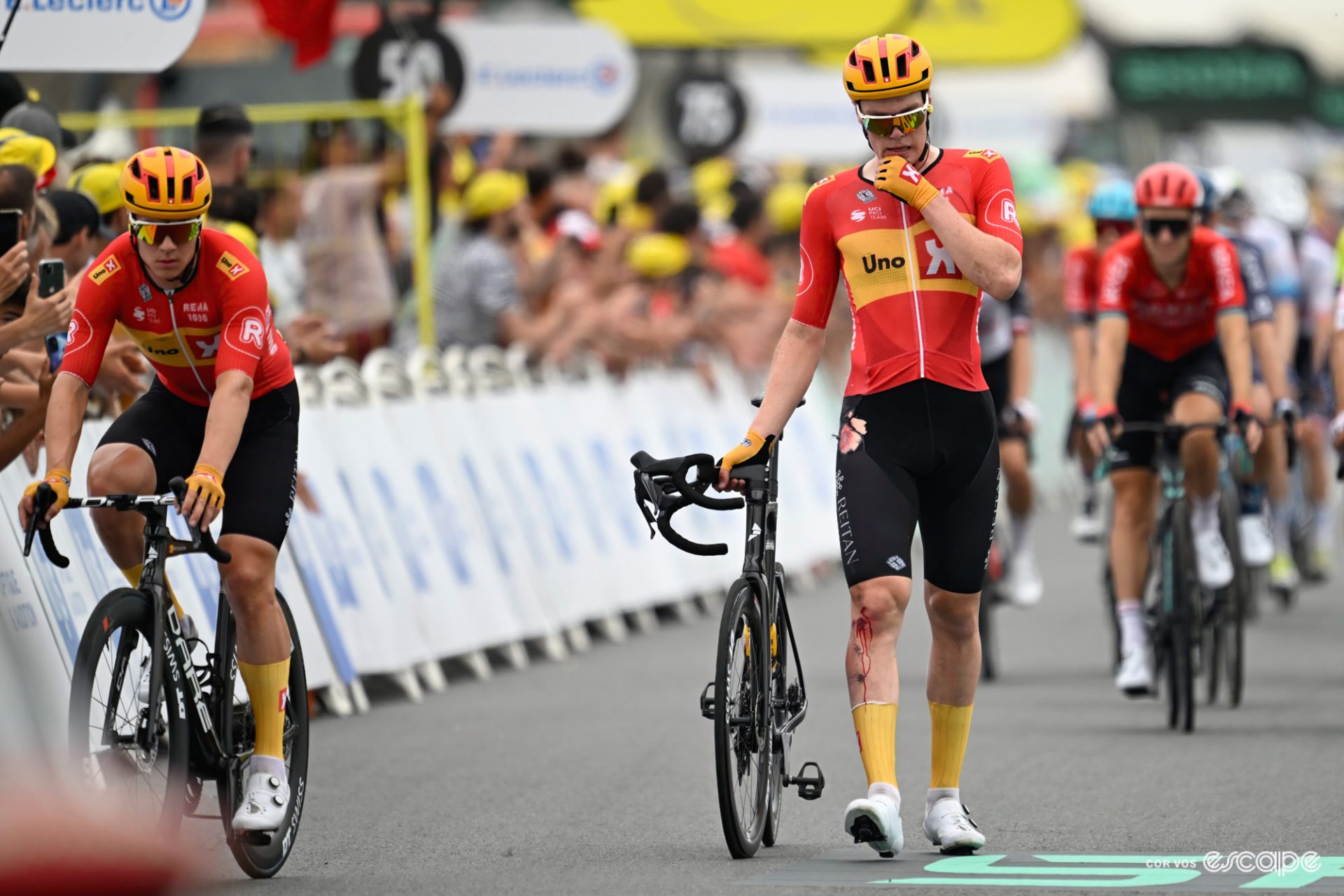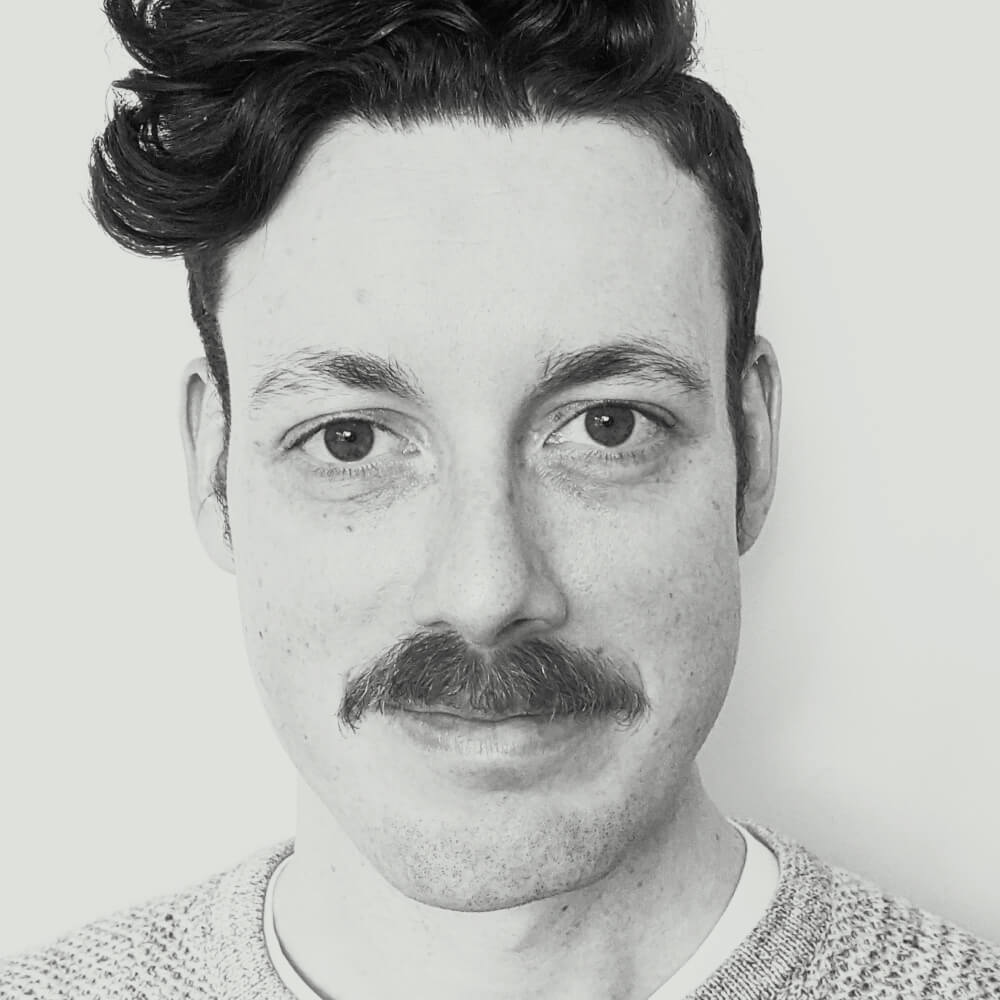Jacopo Guarnieri sits on the tarmac of Nogaro racetrack, hunched over, nursing his broken ribs. Fabio Jakobsen staggers over to the fence, where he’s seen by the Tour doctor. Søren Wærenskjold of Uno-X clip-clops over the finish line, bleeding from his knee, and dumps his bike. A few minutes later a team mechanic follows Wærenskjold down the pits to the team bus, rolling his bike on the back wheel. The handlebars have been violently turned 90 degrees, and the blade of one shifter is road-grated, pushed into the bar and twisted inboard.
For the team mechanics of the Tour de France, it’s going to be a busy night.
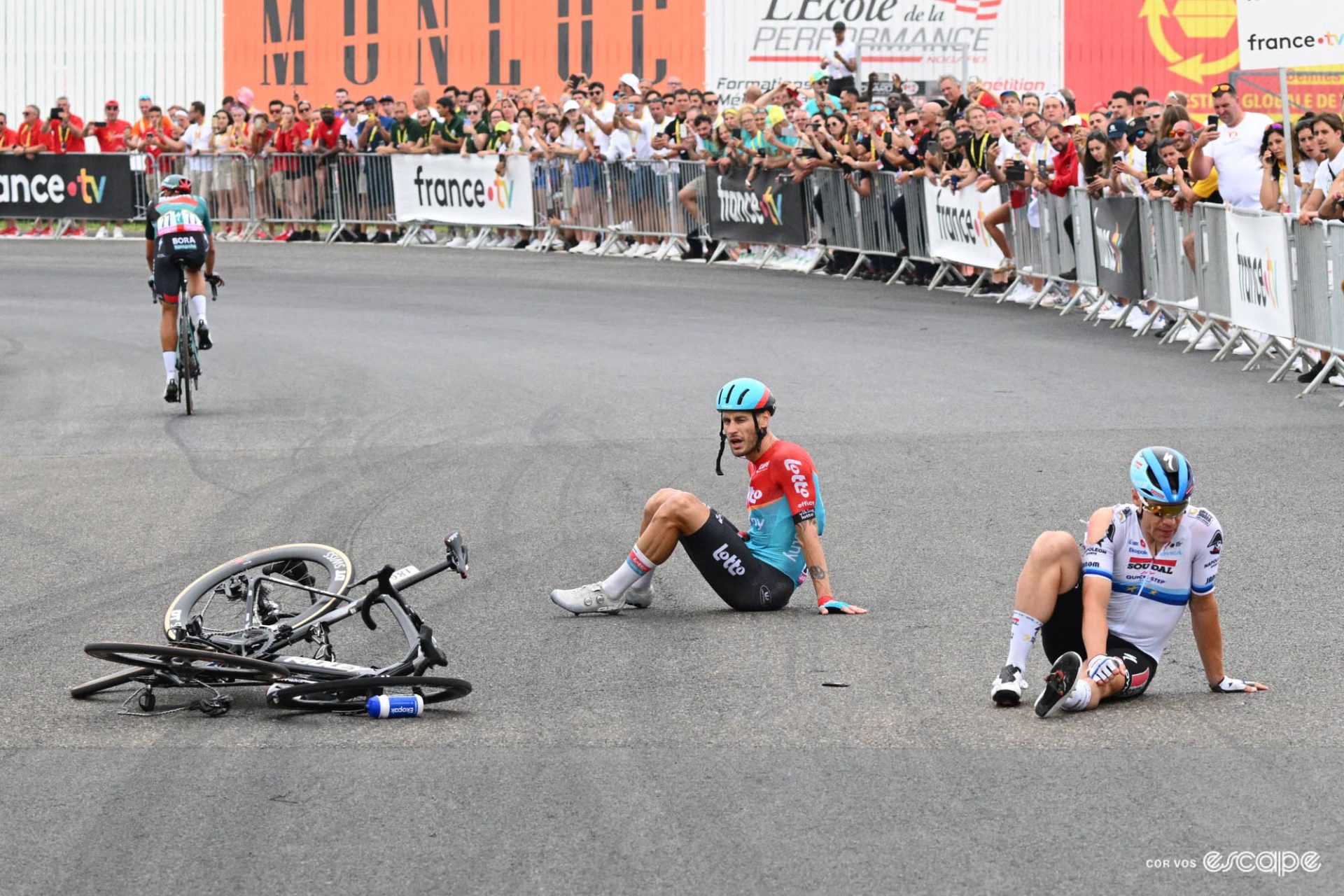
The Tour de France starts with 176 riders and a rolling logistical fleet to support them: buses, vans, trucks, and trailers, containing everything a team needs to service and clothe their eight riders for three weeks. On the road each day, travelling on the route behind the riders, are two station wagons for each team, driven by team directors with a mechanic in the back seat, a selection of tools and spare wheels crammed in with them – three wheelsets in each car, EF Education-EasyPost told us. Then there are eight bikes on the roof of each car, positioned by the importance of the rider (team leaders on the outside right, where the mechanic sits, for easy access). That deals with minor mechanicals and speedy bike swaps, but there are some crashes that can’t be buffed out.
Such was the case for Fabio Jakobsen’s bike, which was pictured after the stage 3 crash forlornly being moved in two halves out of the way of passing vehicles:
That wasn’t a Tarmac spontaneously snapping in half, but the terminal result of a car driving over it, Soudal Quick-Step mechanic Stijn Vandenberghe told Escape Collective. “The bike didn’t break from the crash – first the top tube was broken, then the bike went in the middle of the road but then a race car drove over it,” Vandenberghe said. “Fabio has a special one – he has the European champion’s bike – so we have two left. We built a spare up last night, so he has two left.”
That’s a fairly permanent end of the road for Jakobsen’s crashed bike, but there are less-visceral impacts happening all the time through the Tour de France, and carbon fibre is a simultaneously strong and fragile material. What happens to the bikes after a bingle?
“All the pieces, we can usually take them off from the bike – not with Fabio’s bike, everything was broken: handlebar, fork – and then we give them back to Specialized,” said Vandenberghe. “We keep it in the service course in Belgium, and then every month there’s somebody from Specialized that comes and we give it to them.”
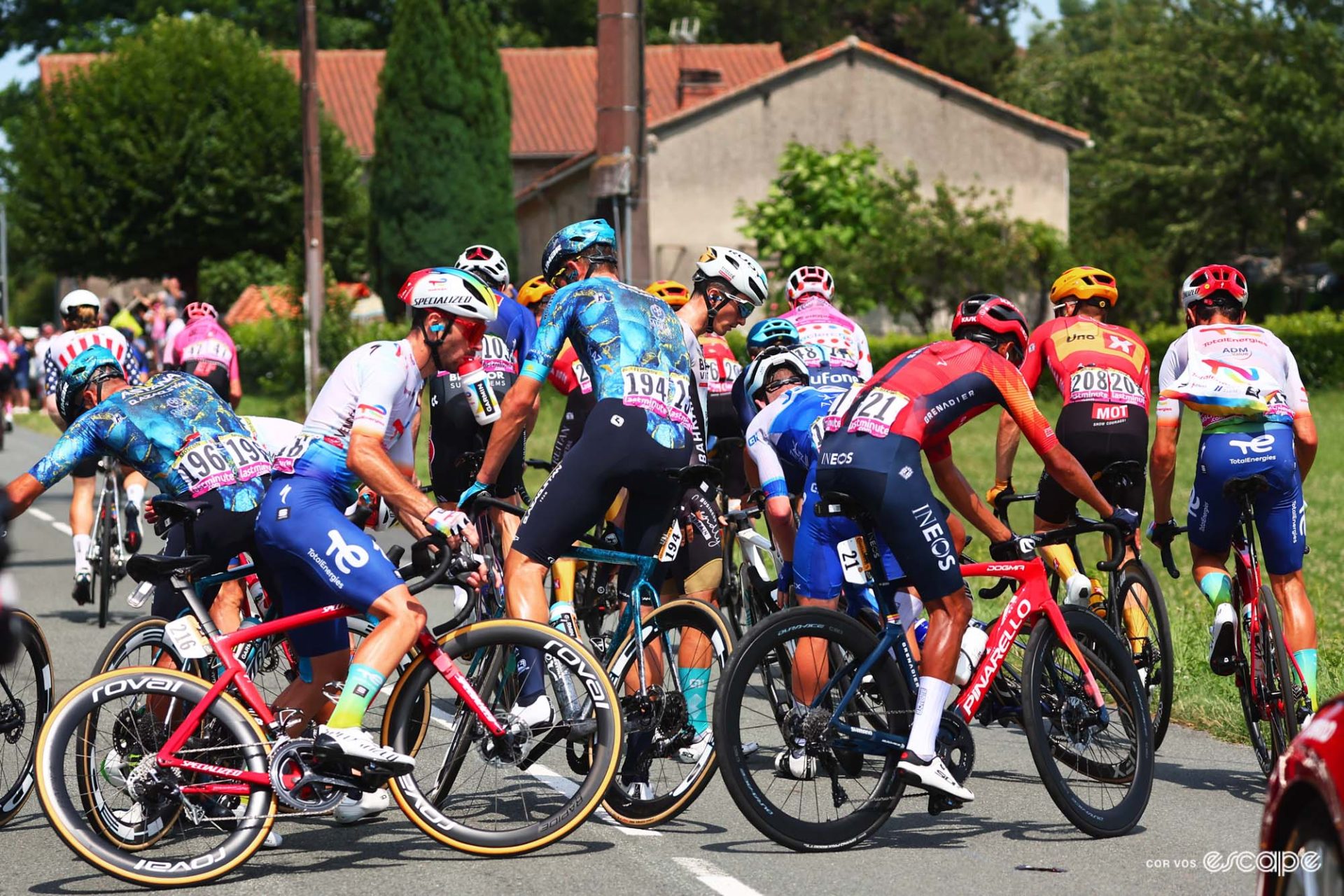
At the Tour for Soudal Quick-Step, there are three road bikes for each rider – one they race with, a spare for each rider on the first race car, and the same for the second race car. Multiplied across the entire 30-rider team roster for the year, there are four road bikes for each rider (three race bikes, one training bike), two time trial bikes (one for on the road, one for at home) plus spare frames in various sizes. In total, Vandenberghe estimated, there are 400-500 bikes used by the team in total per year.
The Lotto DSTNY mechanics had a bit to deal with after the stage 4 crash, too, even though Jacopo Guarnieri ended up leaving the race. “As soon as I see a crash then the bike is broken or damaged, I give a ring to the hotel,” team mechanic Martijn van Schaijk told me. “They start building a new bike and once we arrive, it’s 90 percent built and we do the fine tuning, so that process goes as fast as possible because we have a lot of work, especially since yesterday was a sprint stage and today is a climbing stage, so we needed gearing changes.”
On the Tour, there’s a mix of bikes for different riders; “some of the guys use four bikes, the others have three – and that’s excluding TT bikes,” said Van Schaijk. Guarnieri’s broken frame hangs in the back of the truck until the end of the race and everyone returns to the service course.
Carbon fibre doesn’t always show signs of damage, so I ask if there’s any scanning of frames on the race. “If there’s a question, you just don’t take the risk and just build a new one. We try to inspect the carbon – it’s a bit difficult to see, but there’s the coin trick,” Van Schaijk said, referring to the process of tapping a coin on the frame to see if the resonance changes (cracked carbon sounds dull, rather than sharp). “Especially in the handlebar, we just don’t take any risk.”
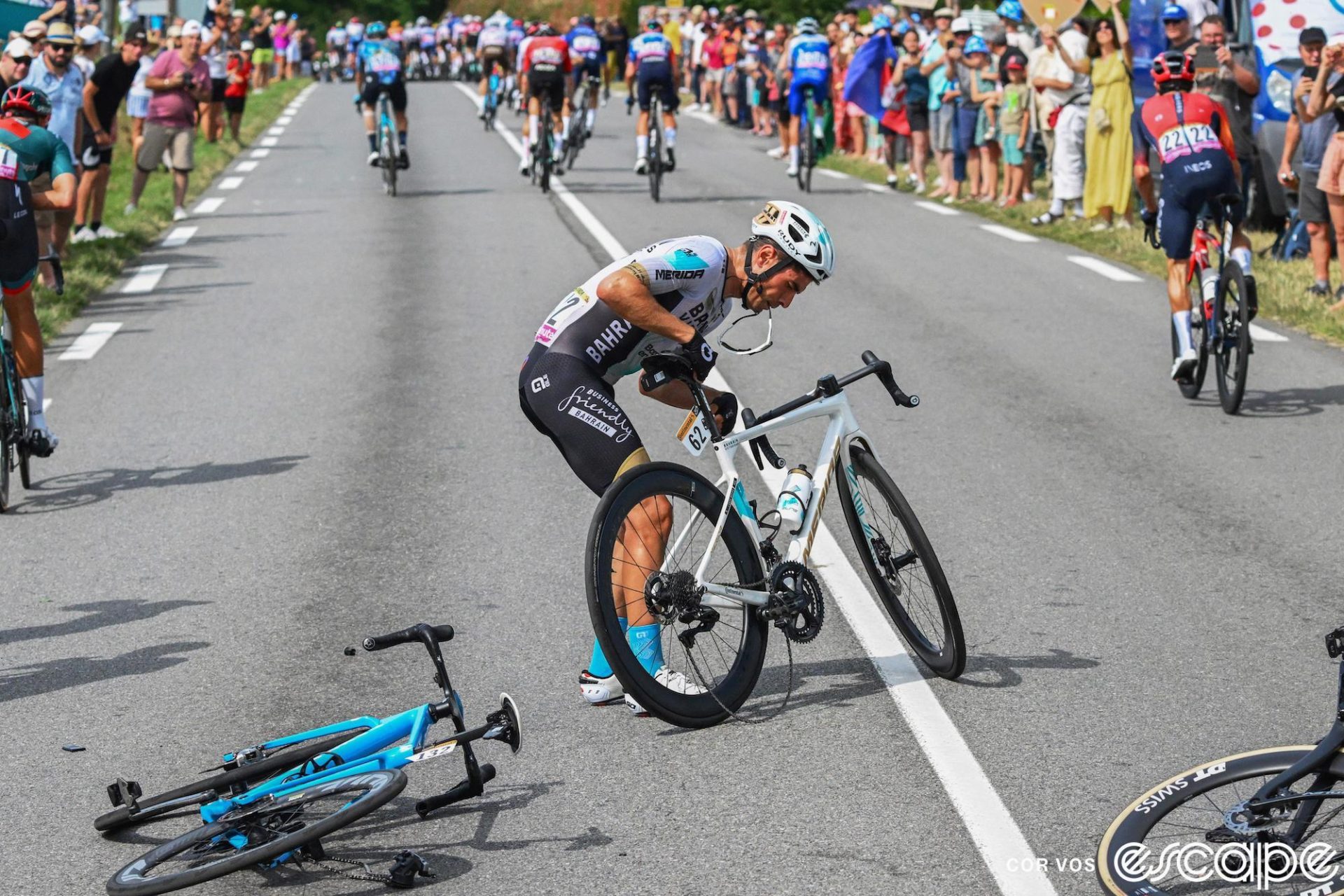
Over at the Uno-X team bus, I spoke to the mechanic Danny Skovgren to get a little health check on Søren Wærenskjold’s bike. He ran me through the damage bill: “one shifter was broken, the handlebar was broken, the pedal and the saddle. So on that bike, we just replaced those things – but if it’s the frame broken, we have another bike for them.” Like the other teams I spoke to, there’s no scanning of parts or frames, with Skovgren also preferring the tappy-tappy coin trick. “For the Tour we have four bikes for each rider, and then we have three spare frames in each size. If there’s a broken frame, we will have a guy coming down on the first rest day to swap all the broken parts.”
Uno-X is a smaller ProTeam with a lesser budget, and is sponsored by the little-known Taiwanese bike brand Dare. I wondered whether there was any concern or financial strain as the equipment stockpile dwindled due to crashes over the year. “If it’s a very bad year, it’s like ‘Okay’,” Skovgren said, shrugging. “But every frame that is broken, we keep them, then we repair them and in the worst case scenario, we can use them again.” At the end of the year, a new fleet of bikes arrives, and the previous year’s supply goes up for second hand sale on the Dare website as well as Norwegian classified website Finn.no.
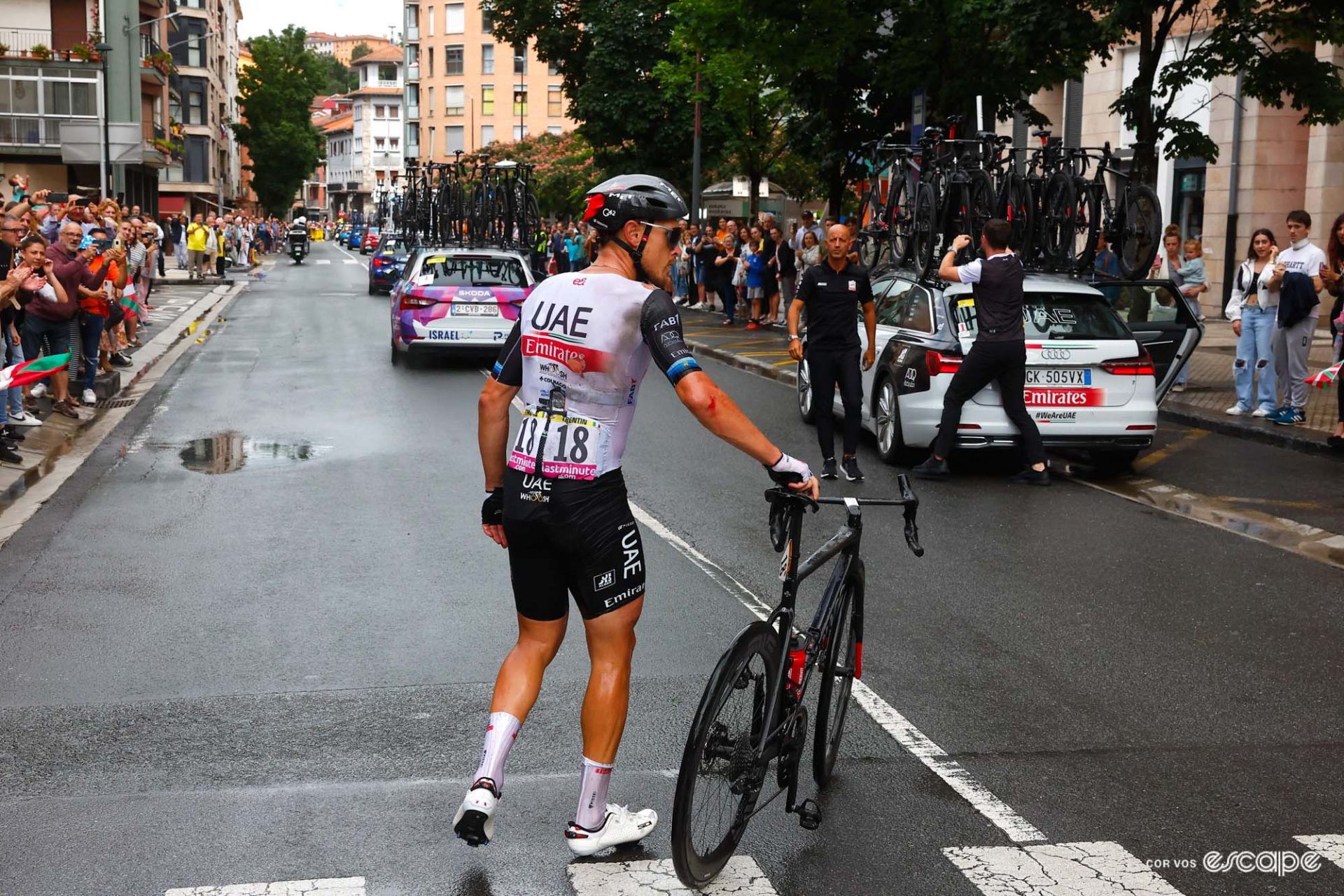
At the extreme opposite end of team budgets, there’s the UAE Team Emirates squad of Tadej Pogačar, racing on a flashy fleet of Colnagos – a minimum of three per rider. More important team members get more: “five for Tadej,” the UAE team mechanic, Boštjan Kavčnik, told me – five identical road bikes, plus two TT bikes. At the Tour, the team’s second-tier GC hope Adam Yates has four road bikes and two TT bikes.
For UAE it’s been a relatively calm race on the mechanical front, with just one bike broken – “not in the race, but on the car,” Kavčnik said. “It fell off the roof. We broke the frame, like this …” he said, reaching up to point at the top tube. “We change the parts and use the bike for the next race, with a new frame.” Like UAE’s equivalents at Soudal Quick-Step, broken frames are sent back to Colnago for inspection – or “research”, as Quick-Step mechanic Vandenberghe referred to it. I ask whether that ‘research’ involves putting them in the Big Research Bin, but Vandenberghe sensibly fails to take the bait.
Enough talk of destroyed carbon fibre – what of the teams that have a particularly good Tour, and need a little something special to roll onto the Champs Elysées on? At least at UAE Team Emirates – for whom it’s well within the realms of possibility for UAE to end up in yellow (or polka dots, or white, or all three) in Paris – they’re not getting too far ahead of themselves. At the stage 5 start, with Adam Yates in yellow, there was no special gear just yet.
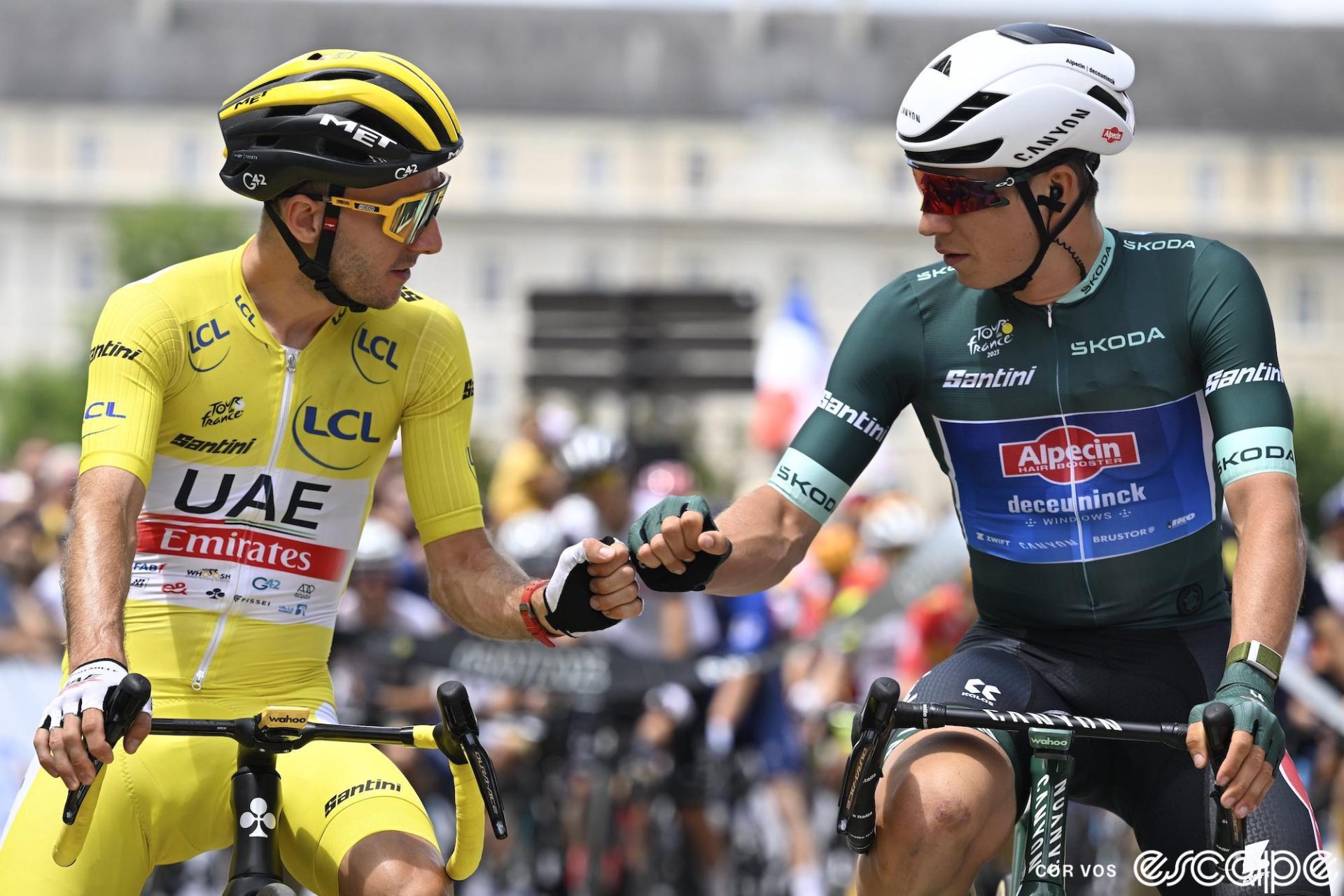
“Just for now, we have just [handlebar] tape,” Kavčnik said. And what happens if the team gets to yellow with Pogačar in the race lead? “Then, we prepare a special frame. Someone paints them the night before Paris, and brings [it] to the hotel, and we prepare the bike before the start.”
That sounds like a more celebratory bit of mechanical work than stripping a smashed frame for parts. Until then, there’s a long way to Paris – and the fate of the Tour’s race bikes can change in a second.
What did you think of this story?
